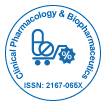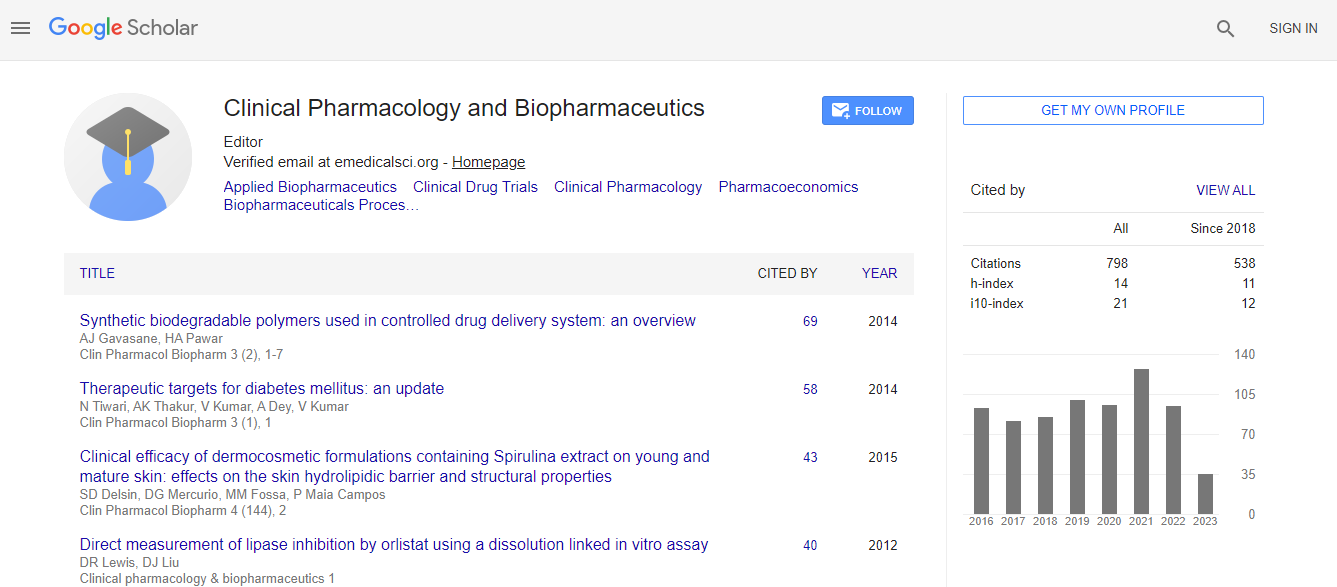Our Group organises 3000+ Global Events every year across USA, Europe & Asia with support from 1000 more scientific Societies and Publishes 700+ 51���ϳԹ��� Journals which contains over 50000 eminent personalities, reputed scientists as editorial board members.
51���ϳԹ��� Journals gaining more Readers and Citations
700 Journals and 15,000,000 Readers Each Journal is getting 25,000+ Readers
Citations : 1089
Indexed In
- CAS Source Index (CASSI)
- Index Copernicus
- Google Scholar
- Sherpa Romeo
- Genamics JournalSeek
- RefSeek
- Hamdard University
- EBSCO A-Z
- OCLC- WorldCat
- Publons
- Euro Pub
- ICMJE
Useful Links
Recommended Journals
Related Subjects
Share This Page
Finding pharmaceutical agents by assembling chemotypes
6th European Biopharma Congress
Jun Xu, Mengyang Xu, Liangyue Wang, Chao Zhao and He Peng
Sun Yat-sen University, China
Posters & Accepted Abstracts: Clin Pharmacol Biopharm
DOI:
Abstract
This talk introduces a de novo chemotype (substructure) generation algorithm (DSGA) that derives frequent substructures in order to avoid the subjectivity of empirical method, and avoid the meaningless substructures generated from algorithmic approaches by statistical analyses. DSGA derives frequent chemical substructures (FCS) from a large compound library. In an FCS, substructures are not inter-included. When the library is big enough to represent the chemical diversity, such as ZINC database (27 million medicinal compounds), the resulting FCS is termed as the FCS dictionary (FCSD) for drug-like compounds. For a focused compound library (FL), DSGA can derive a focused FCS (fFCS) from FL. (fFCS) can be used as structural descriptors for focus library SAR studies. Six focused libraries against targets PDE4D, mTOR, HDAC1, DPP4, BACE and ALR2 were tested with DSGA approach. Using the (fFCS) as structural descriptor sets, six virtual screening models were generated to predict ligands against the targets; the prediction accuracies are greater than 90%. Three methods were proposed to assembly drug-like molecules from substructures: Using the laws in the nature, such as isoprene rule; organic synthesis rules, such as retro-synthon rules proposed by E J Corey; pharmaceutical rules derived from a focused compound library against a specific target. We use DSGA to figure out rules that are used to compose privileged scaffolds by assembling FCS. It can be chemically challenging to make the compounds proposed by these assembling approaches. By combining DSGA method, bioisosterism method and click chemistry, we generated privileged chemome (substructures/chemotypes) from Hsp90 inhibitor library, and then found out available chemical fragments with bioisosterism rules. With SPR technology, we confirmed the fragments that interacted with Hsp90. Finally, we used “click chemistry” to assemble the substructures and produced nanomolar selective Hsp90 inhibitors.Biography
E-mail: junxu@biochemomes.com

